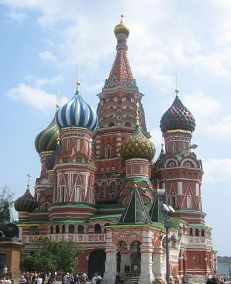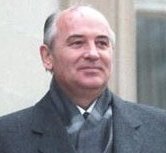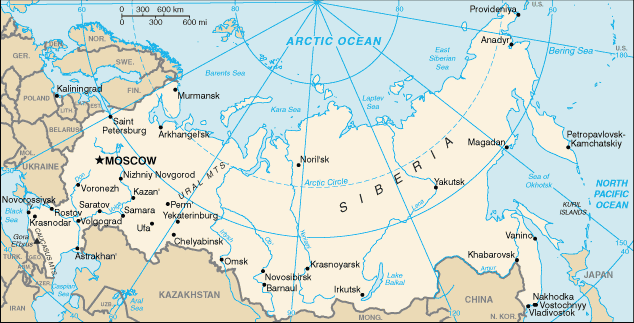Geography >> Asia >> Russia History and Timeline
Russia
Capital: Moscow
Population: 145,872,256
The Geography of Russia
Borders: Norway, Finland, Estonia, Latvia, Belarus, Ukraine, Georgia, Azerbaijan, Kazakhstan, China, Mongolia, North Korea, Lithuania and Poland from the enclave Kalingrad Oblast, maritime borders with Japan and the United States
Total Size: 17,075,200 square km
Size Comparison: approximately 1.8 times the size of the US
Geographical Coordinates: 60 00 N, 100 00 E
World Region or Continent: Asia
General Terrain: broad plain with low hills west of Urals; vast coniferous forest and tundra in Siberia; uplands and mountains along southern border regions
Geographical Low Point: Caspian Sea -28 m
Geographical High Point: Gora El'brus 5,633 m
Climate: ranges from steppes in the south through humid continental in much of European Russia; subarctic in Siberia to tundra climate in the polar north; winters vary from cool along Black Sea coast to frigid in Siberia; summers vary from warm in the steppes to cool along Arctic coast
Major Cities: MOSCOW (capital) 10.523 million; Saint Petersburg 4.575 million; Novosibirsk 1.397 million; Yekaterinburg 1.344 million; Nizhniy Novgorod 1.267 million
Major Landforms: Russia is the largest country in the world by size. Major landforms include the Caucasus Mountains, Altai Mountains, Ural Mountains, Mount Elbrus, Kamchatka Peninsula, Siberian Plain, Siberian Plateau, and the Stanovoy Mountains.
Major Bodies of Water: Volga River, Ob River, Yenisey River, Lake Baikal, Ladoga Lake, Onega Lake, Baltic Sea, Black Sea, Sea of Azov, Caspian Sea, Arctic Ocean, Pacific Ocean

St. Basil's Cathedral
Economy of Russia
Major Industries: complete range of mining and extractive industries producing coal, oil, gas, chemicals, and metals; all forms of machine building from rolling mills to high-performance aircraft and space vehicles; defense industries including radar, missile production, and advanced electronic components, shipbuilding; road and rail transportation equipment; communications equipment; agricultural machinery, tractors, and construction equipment; electric power generating and transmitting equipment; medical and scientific instruments; consumer durables, textiles, foodstuffs, handicrafts
Agricultural Products: grain, sugar beets, sunflower seed, vegetables, fruits; beef, milk
Natural Resources: wide natural resource base including major deposits of oil, natural gas, coal, and many strategic minerals, timber
Major Exports: petroleum and petroleum products, natural gas, wood and wood products, metals, chemicals, and a wide variety of civilian and military products
Major Imports: machinery and equipment, consumer goods, medicines, meat, sugar, semifinished metal products
Currency: Russian ruble (RUR)
National GDP: $2,383,000,000,000
Government of Russia
Type of Government: federation
Independence: 24 August 1991 (from Soviet Union)
Divisions: The country of Russia is divided up into a complex system of 83 regions called "federal subjects." There are different types of federal subjects including:
- Oblasts - These are like provinces for most countries. There are 46 oblasts plus one "autonomous" oblast.
- Republics - These are almost like separate countries, but Russia represents them internationally. There are 21 republics.
- Krais - Krais are like territories and very similar to oblasts. There are 9 Krais.
- Okrug - Okrugs are located inside a krais or an oblast. There are 4 Okrugs.
- Federal cities - There are two cities (Moscow and St. Petersburg) that operate as separate regions.
National Anthem or Song: Gimn Rossiyskoy Federatsii (National Anthem of the Russian Federation)
National Symbols:
- Animal - Russian bear
- Symbol - Double-headed Eagle
- Tree - Birch tree
- Instrument - Balalaika
- Coat of arms - A golden double-headed eagle on a red shield
- Other symbols - Fur hats, Valenki (felt boots), Hammer and sickle (USSR), Mother Russia, Red star (USSR)
Description of flag: The flag of Russia was adopted on December 11, 1993. It is a "Tricolour" flag with three horizontal stripes of white (top), blue (middle), and red (bottom).
National Holiday: Russia Day, 12 June (1990)
Other Holidays: New Years', Christmas (January 7), Defender of the Fatherland (February 23), International Women's Day, Labor Day (May 1), Victory Day (May 9), Russia Day (June 12), Unity Day
The People of Russia
Languages Spoken: Russian, many minority languages
Nationality: Russian(s)
Religions: Russian Orthodox 15-20%, Muslim 10-15%, other Christian 2% (2006 est.)
Origin of the name Russia: The name "Russia" comes from the state of Rus. The Kievan Rus was a powerful empire during the Middle Ages. The land became known as the "Land of Rus" which eventually became Russia.
Famous People:

Mikhail Gorbachev
- Mikhail Baryshnikov - Ballet dancer
- Sergey Brin - One of the founders of Google
- Leonid Brezhnev - Leader during much of the Cold War
- Fyodor Dostoyevsky - Author who wrote Crime and Punishment
- Yuri Gagarin - First man in space
- Mikhail Gorbachev - President of the Soviet Union
- Mila Kunis - Actress
- Vladimir Lenin - Revolutionary leader
- Nastia Liukin - Olympic gold medal gymnast
- Tsar Nicholas II - Last Tsar of Russia
- Alexander Ovechkin - Hockey player
- Vladimir Putin - President of Russia
- Maria Sharapova - Tennis player
- Joseph Stalin - Leader of the Soviet Union during WW2
- Leo Tolstoy - Author who wrote War and Peace
Geography >> Asia >> Russia History and Timeline
** Source for population (2019 est.) is United Nations. GDP (2011 est.) is CIA World Factbook.




